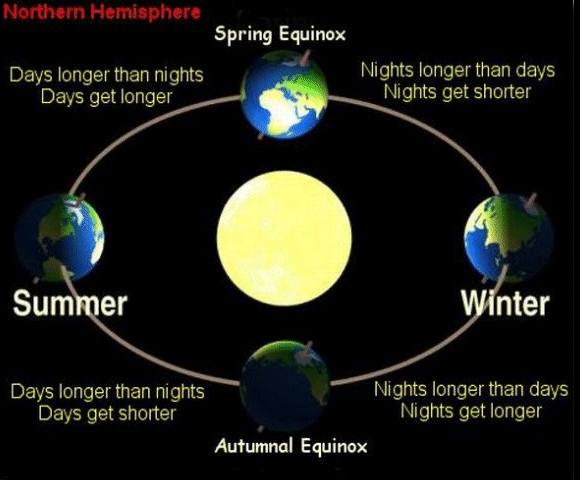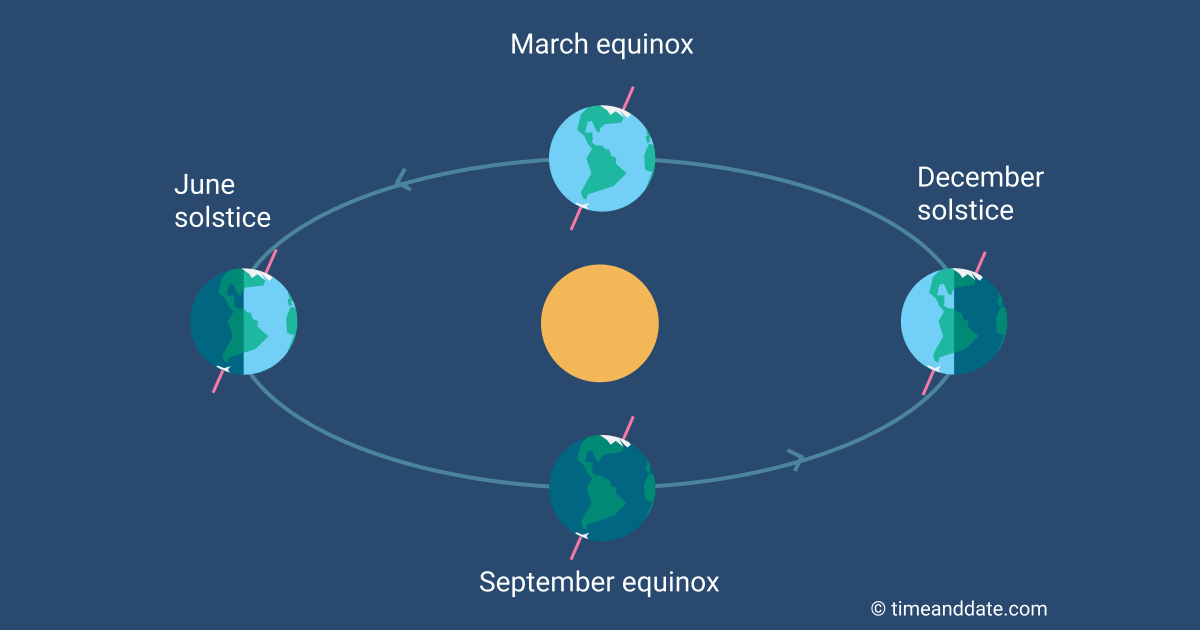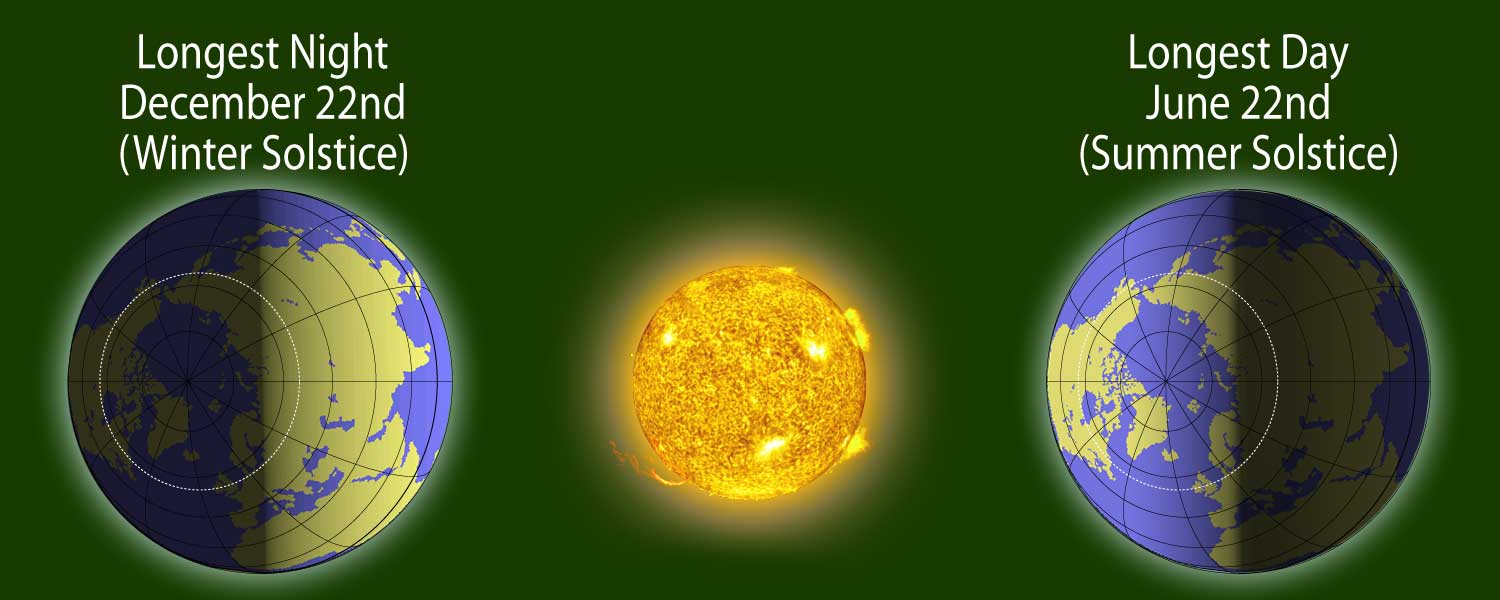

The equilux is when day and night are equal and occurs a few days before the spring equinox, and a few days after the autumn equinox. The Sun, therefore, appears to rise before its centre at the horizon, giving more daylight than you might expect (12 hours 10 minutes on the equinox). As well as this sunlight is refracted by the Earth's atmosphere. This is because the Sun appears as a disk in the sky, and the top half rises above the horizon before the centre. On the equinox, the length of day and night are only nearly equal. Similarly, the autumn equinox marks the start of autumn as the night becomes longer than the day. The spring equinox marks the beginning of spring and from this day forward the day is longer than the night. During the equinox, day and night will be around the same length which is evident in the word's origin derived from the Latin equi (meaning 'equal') and nox (meaning 'night'). They occur between the summer and winter solstices marking the point the Sun crosses the equator's path and becomes positioned exactly above the equator between the Northern and Southern Hemisphere. The Equinox in the Northern Hemisphere occurs twice a year around 20 March (the spring equinox) and around 22 September (the autumn equinox). December solstice to March equinox: 89.The equinox and solstice define the transitions between the seasons of the astronomical calendar and are a key part of the Earth's orbit around the Sun.September equinox to December solstice: 89.8 days.June solstice to September equinox: 93.6 days.March equinox to June solstice: 92.8 days.On average, winter lasts for 89.0 days in the Northern Hemisphere and 93.6 days in the Southern Hemisphere. The Earth does not move at a constant speed in its elliptical orbit, so the seasons are not of equal length. June | July | August | September How Long Is Winter? Read more about the history and meaning of the winter months: Northern winter monthsĭecember | January | February | March Southern winter months South of the equator, it starts in June and ends in September. In the Northern Hemisphere, astronomical and meteorological winter runs from December to March. Winter festivals: Christmas, Juul, and Saturnalia Winter Months The start of winter and the winter solstice are celebrated in cultures and religions around the world with various traditions, holidays, and festivals. This is because it takes time for Earth to warm up, an effect known as seasonal lag.

© Longer Days, but Falling TemperaturesĪlthough daylight hours increase during the winter months, temperatures continue to fall in most regions. Places within the polar circles experience polar night during all or part of the winter season when the Sun does not rise at all.Įarliest sunset is not on the shortest dayĮarth's orientation at the December solstice In Toronto, the shortest day is just under 8 hours and 56 minutes long in Miami, roughly 2000 kilometers or 1200 miles farther south, it lasts about 10 hours and 32 minutes. Locations closer to the poles experience larger differences in day length throughout the year, so winter days are shorter there. This means days get longer during winter-very slowly at first, but at ever-larger daily intervals as the March equinox approaches, heralding the start of spring. Meteorological and other seasons definitions Days Get Longer During WinterĪstronomical winter begins at the winter solstice, which is the shortest day of the year. And, in some countries, the beginning of the seasons is determined by average temperatures rather than fixed dates or astronomical events. Meteorologists use a different method of defining the first day of winter. Solstices and equinoxes in your city Alternative Winter Start Dates Local times for this solstice worldwide.Sun rise/set and day length around this solstice.This corresponds to Wednesday, 21 June 2023, 14:57 UTC.

In Odesa, Odessa, Ukraine: Wednesday, 21 June 2023, 17:57 EEST (Change location) Winter Solstice, Southern Hemisphere (June)Īustralia, New Zealand, South America, southern Africa


 0 kommentar(er)
0 kommentar(er)
